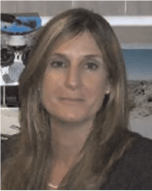Shell’s integrated quantitative interpretation workflow*
F. Glass A , S. Gelinsky B , I. Espejo B , T. Santana C and G. Yardley DA Shell.
B Shell International E&P.
C YPF E&P.
D Maersk Oil North Sea UK Ltd.
The APPEA Journal 51(2) 681-681 https://doi.org/10.1071/AJ10061
Published: 2011
Abstract
Shell Development Australia is a major asset holder in the Browse Basin and the Carnarvon Basin in the North West Shelf of Australia. In 2007, Shell Development Australia embarked on an integrated quantitative seismic interpretation project related to the Triassic Mungaroo Formation in the Carnarvon Basin. The main objective was to constrain the uncertainties in using seismic data as a predictor for rock and fluid properties of fields and prospects in the basin.
This project followed a workflow that has been proven in other basins around the world, whereby the vertical and lateral variability of rock properties of both reservoir and non-reservoir lithologies are captured in general trends. The calculated trends are based on well log extractions of end member lithologies and the input of petrographic information and forward modelling. In combination with a regionally consistent 3D burial model for the estimation of remaining porosity, these established rock trends then allow for a prediction of various acoustic responses of reservoir and pore fill properties.
The comparisons between the pre-drill predicted rock properties and the properties encountered after drilling at different reservoir levels have lead to a general confidence that the reservoir properties can be derived from seismic data where well data are not abundant. This increased confidence will play a major part in Shell’s attitude towards appraisal activities and decisions on various development options.

Frank Glass has been working for Shell since 1989 and is the geoscience integration coordinator for Shell Development Australia. The main focus in this role is on the integration of the seismic signal into realistic geological scenarios that fit a regional framework. Since graduation as structural geologist from the University of Amsterdam, he has held positions in research, development geophysics and exploration in the US, UK, Australia and the Netherlands. |

Stephan Gelinsky is Shell’s principal technical expert for QI petrophysics. He works in the company’s global projects and technology—expertise and deployment division. He is based in Houston as a member of the quantitative subsurface evaluation department. Beyond his role of supporting the QI petrophysics discipline and skill pool, his day-to-day project work involves assessing acoustic rock properties and rock model building, contributing to integrated seismic amplitudes studies, and performing formation evaluation. |

Irene Espejo has worked for Shell since 2001, when she joined the sedimentary petrology group at the Bellaire Technology Center. Her work has addressed up-scaling of reservoir properties among thin section, core, log and reservoirs at sub-seismic resolution, and relating them to depositional environments, provenance and rock properties. She led regional evaluations, exploration and production projects and field acquisitions in Venezuela, Colombia, Ecuador, Peru, Bolivia and Argentina while working at Amoco and Unocal. Shell projects targetted areas such as offshore Angola, Nigeria and Brazil, the Gulf of Mexico, Western Siberia, Libya, Western Australia, French Guiana and onshore Canada. Previous academic experience includes a research associate appointment at Rice University and doctorate in geology from University of Buenos Aires. |

Teresa Santana is the team leader geophysics for YPF E&P after having worked for Shell since 1992, with assignments in Argentina, the Netherlands and the US. Teresa is an experience geophysicist in quantitative interpretation techniques and an expert seismic interpreter. Teresa has a wide exposure in the business: exploration, development, new business development participating and/or leading projects integrating rock models for seismic prediction to de-risk opportunities and prioritise portfolios. Shell’s projects included areas are Brazil, the Gulf of Mexico, WA, Guyanas, Canadian Beaufort Sea, North Sea, Argentina and Bolivia. |

Gareth Yardley has more than 15 years of experience in basin modelling and pore pressure prediction. Since obtaining his PhD in geophysics from Edinburgh University, Gareth has undertaken postdoctoral research at Heriot-Watt University and worked with Shell. His roles in Shell included basin model development and integration of Shell’s in-house basin modelling tool with the reservoir quality prediction software Touchstone. He is a lead petroleum systems analyst for Maersk Oil based in Aberdeen, UK. |


